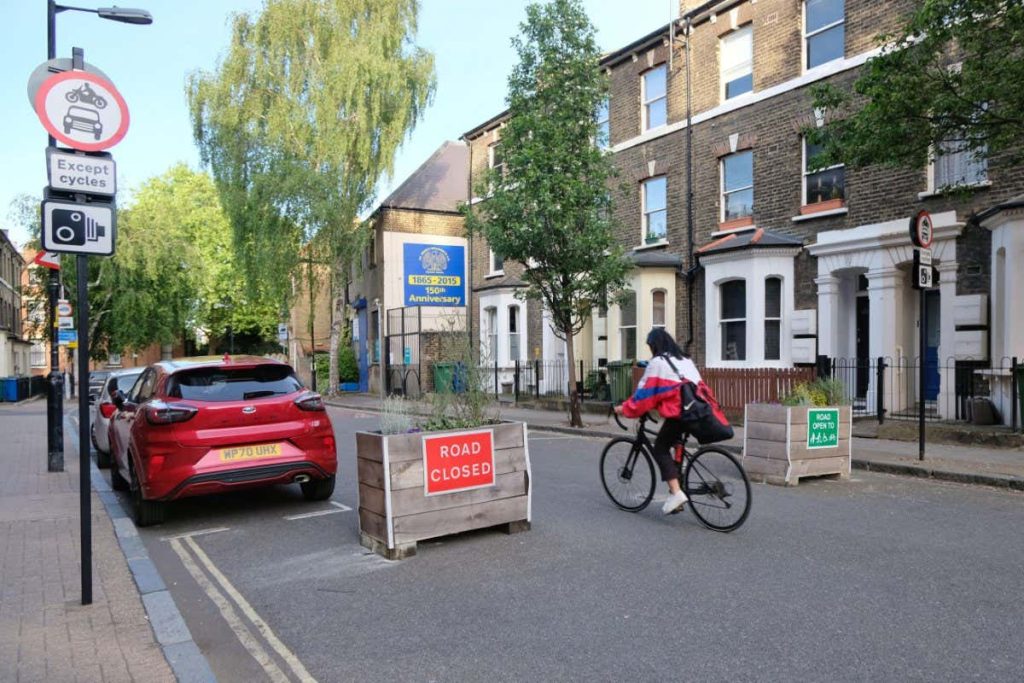Schemes that aim to reduce traffic through certain streets have been accused of increasing air pollution on roads at their borders, but a study in London has found that the opposite is true
Environment 24 November 2022
A low traffic neighbourhood in London
Eleventh Hour Photography / Alamy Stock Photo
Low traffic neighbourhoods (LTNs), which use giant planters, barriers and cameras to restrict vehicle access to residential streets, lead to a reduction in traffic volume and nitrogen dioxide pollution both inside their perimeters and on boundary roads, according to a study of three such schemes in London. The findings run counter to claims by anti-LTN campaigners that the zones merely displace traffic and pollution to their boundary.
“Not only does traffic and air pollution reduce within the LTNs as you would expect, but we also found some reductions at the boundary areas, especially for air pollution,” says Audrey de Nazelle at Imperial College London. “The concern for air pollution is not a reason not to be in support of LTNs.”
Over the past three years, hundreds of LTNs have been introduced in towns and cities across the UK in a bid to cut traffic and air pollution and make residential streets safer to walk and cycle around. They usually restrict through traffic from certain streets, while allowing pedestrians and cyclists to pass unobstructed.
Advertisement
But the measures have sparked vocal opposition, with some residents and campaigners claiming LTNs displace traffic and pollution from richer residential streets inside the zone to poorer communities living on their periphery. LTN barriers, such as planters, have been vandalised and tipped over in local disputes.
To find out whether the air pollution claims were accurate, de Nazelle and her colleagues looked at three LTNs installed in the London borough of Islington in 2020, assessing the traffic and air pollution impact within the LTN zones and in the surrounding area using data provided by the local government. The team looked at each area in the months both before and after LTNs were introduced.
They found that concentrations of nitrogen dioxide fell by 5.7 per cent within the LTNs and by just under 8.9 per cent on their boundaries, compared to the change in concentrations at other sites in Islington not subject to any traffic interventions, which served as a control group. Meanwhile, traffic volumes dropped by more than half inside the LTNs and by 13 per cent on boundary roads after the schemes were implemented.
De Nazelle says more research is needed to confirm the findings at a larger scale, but the results chime with wider research on the benefits of LTNs in cutting traffic accidents and increasing walking and cycling rates.
“What we are finding is not a surprise, we expect to find it elsewhere,” says de Nazelle. “We have sufficient evidence that LTNs are beneficial for community members, for members of society. There’s no evidence of harm in boundary areas.”
Sign up to our free Fix the Planet newsletter to get a dose of climate optimism delivered straight to your inbox, every Thursday
More on these topics:

